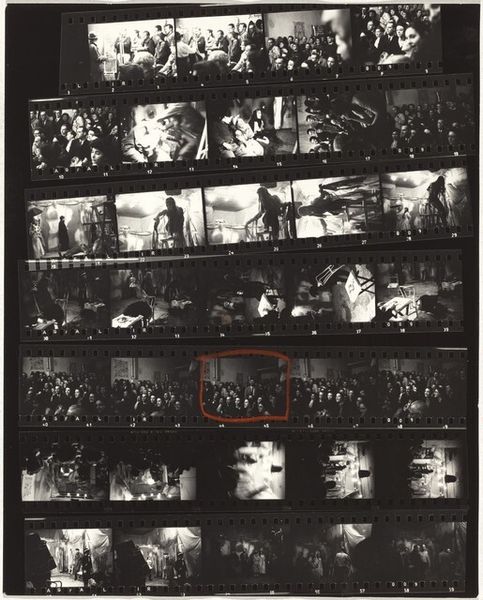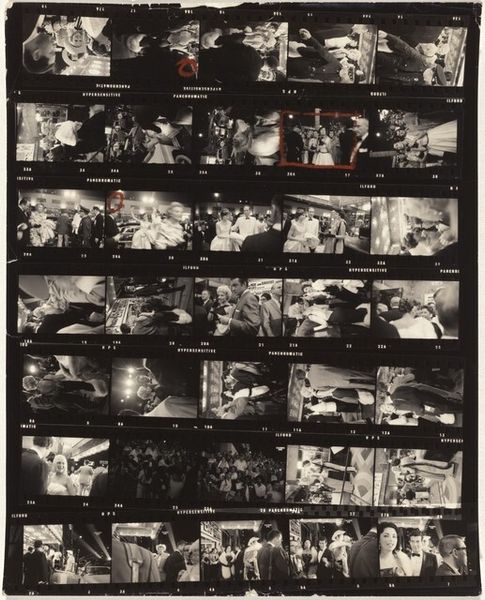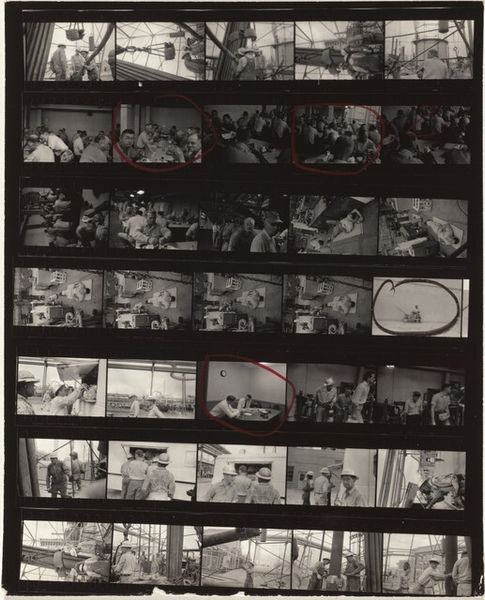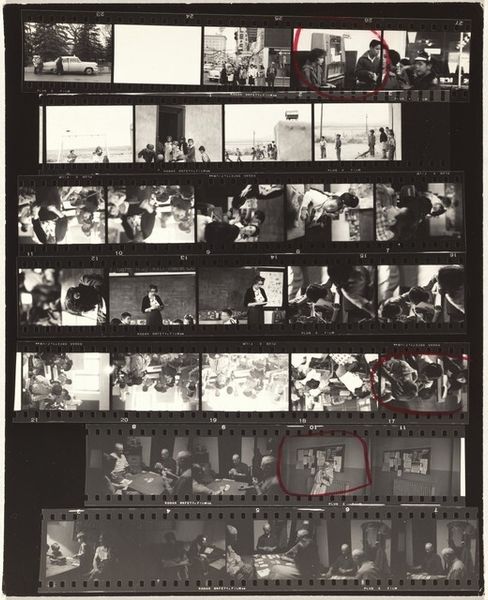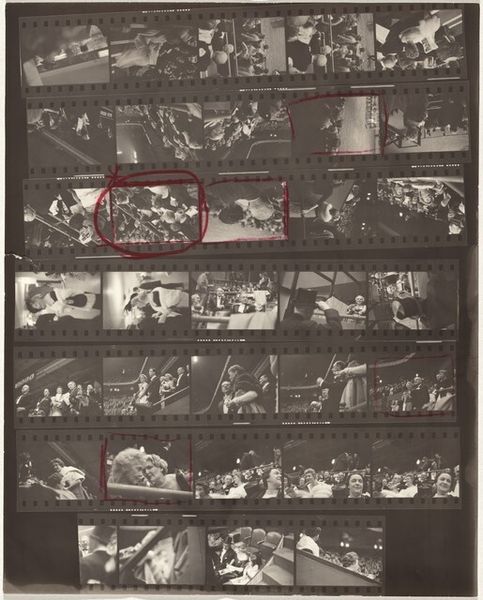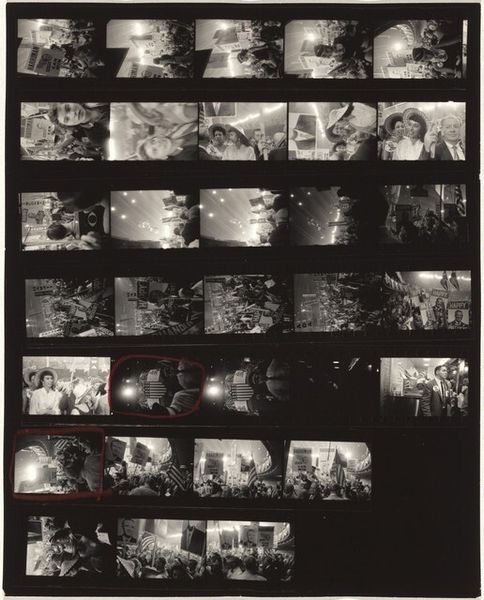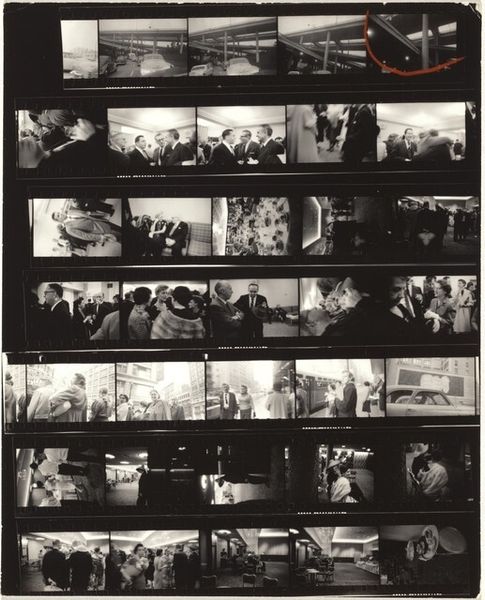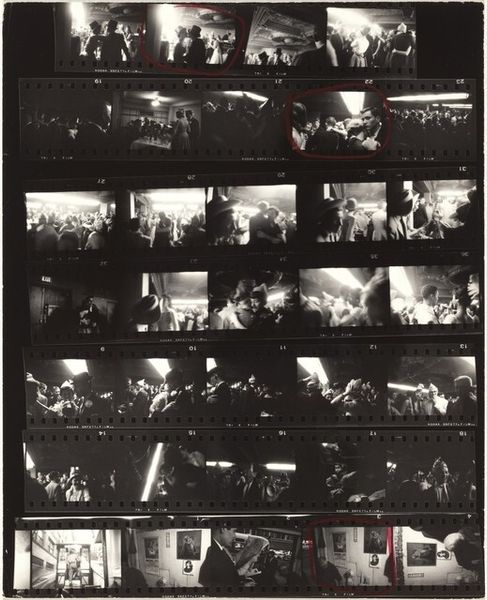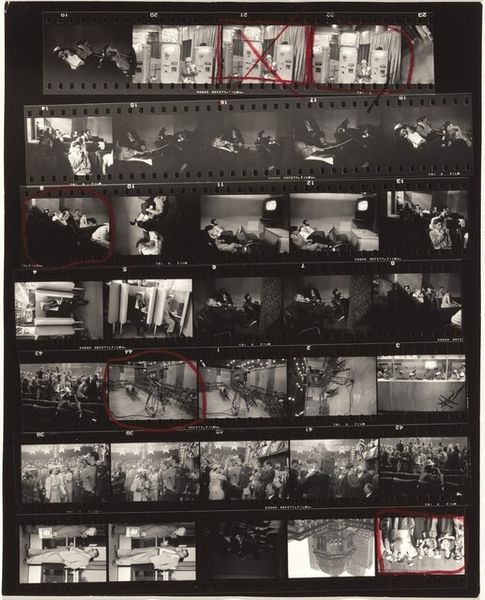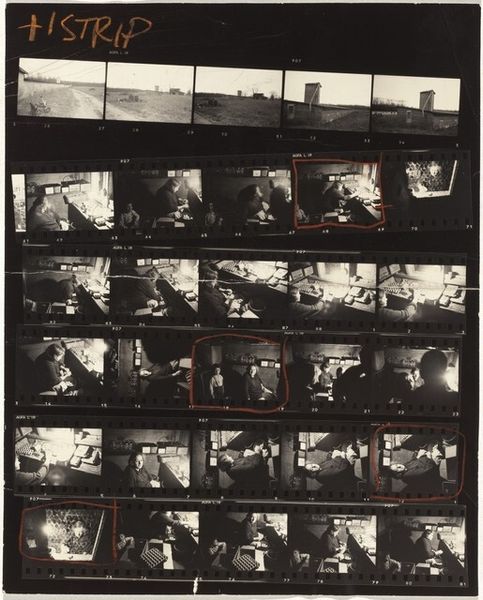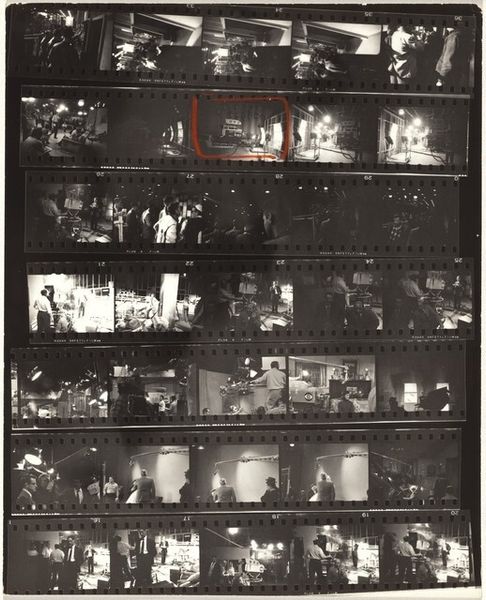
Dimensions: overall: 25.2 x 20.2 cm (9 15/16 x 7 15/16 in.)
Copyright: National Gallery of Art: CC0 1.0
Curator: Here we have Robert Frank’s “Hollywood 12,” a gelatin-silver print made in 1958. It is a series of images on photographic film that give the viewer multiple shots of what appears to be an event, a gathering of people in what looks like different places. Editor: My immediate reaction is that the piece feels raw and documentary-like. There are images on the verge of being blurred and not easy to make out the subjects, conveying a sense of reality and spontaneity rather than an artificial constructed one. The annotations around a few frames suggests a curated, personal selection, an invitation into the artist's editorial process. Curator: Frank's work often touches upon themes of social commentary, and disillusionment, particularly the American experience. Given the date, the late 1950s, the arrangement seems critical, capturing various segments of American society but focusing heavily on social events. It suggests Frank is investigating the cultural constructs, not just showing us random pictures. Editor: Absolutely. Structurally, the contact sheet provides an important layer, doesn’t it? The grid itself speaks to standardization and mass production, contrasting against the potential chaos captured within each frame. Moreover, this tension makes us ponder the selection process: What criteria did Frank use for these choices? Curator: You're spot on. There's definitely a play between the individual shot and the collection as a whole. Viewing the ensemble makes us understand how Frank challenged traditional photography conventions. He embraced imperfection, creating a uniquely subjective narrative. This arrangement is full of intention in its composition. The film annotations add a visual layer on top of this commentary that gives another level of analysis of what each shot signifies, for example the double shot of an old women marked with an "X", right at the end of the sheet. It does indeed emphasize Frank’s gaze upon certain subjects that may stand out in that moment, perhaps revealing certain American archetypes of that era. Editor: I also wonder about Frank's artistic influences here. His photography shares some similarities with elements of the Black Arts Movement as it gives insight into black communities; also hints of the raw edge we’d see emerge in Pop Art not long after. Its realism lies somewhere else though, like photojournalism that is less concerned with conventional norms of how the world is viewed. The formal elements reinforce this sense of the "everyday". Curator: It’s the confluence of historical moment, critical artistic viewpoint, and very material choice. Frank really encapsulated a particular feeling toward social realism within the visual language that's immediate and unique. Editor: I’m leaving this with a richer appreciation for the way photographic technique itself became a means of commentary during an important time in American history.
Comments
No comments
Be the first to comment and join the conversation on the ultimate creative platform.


